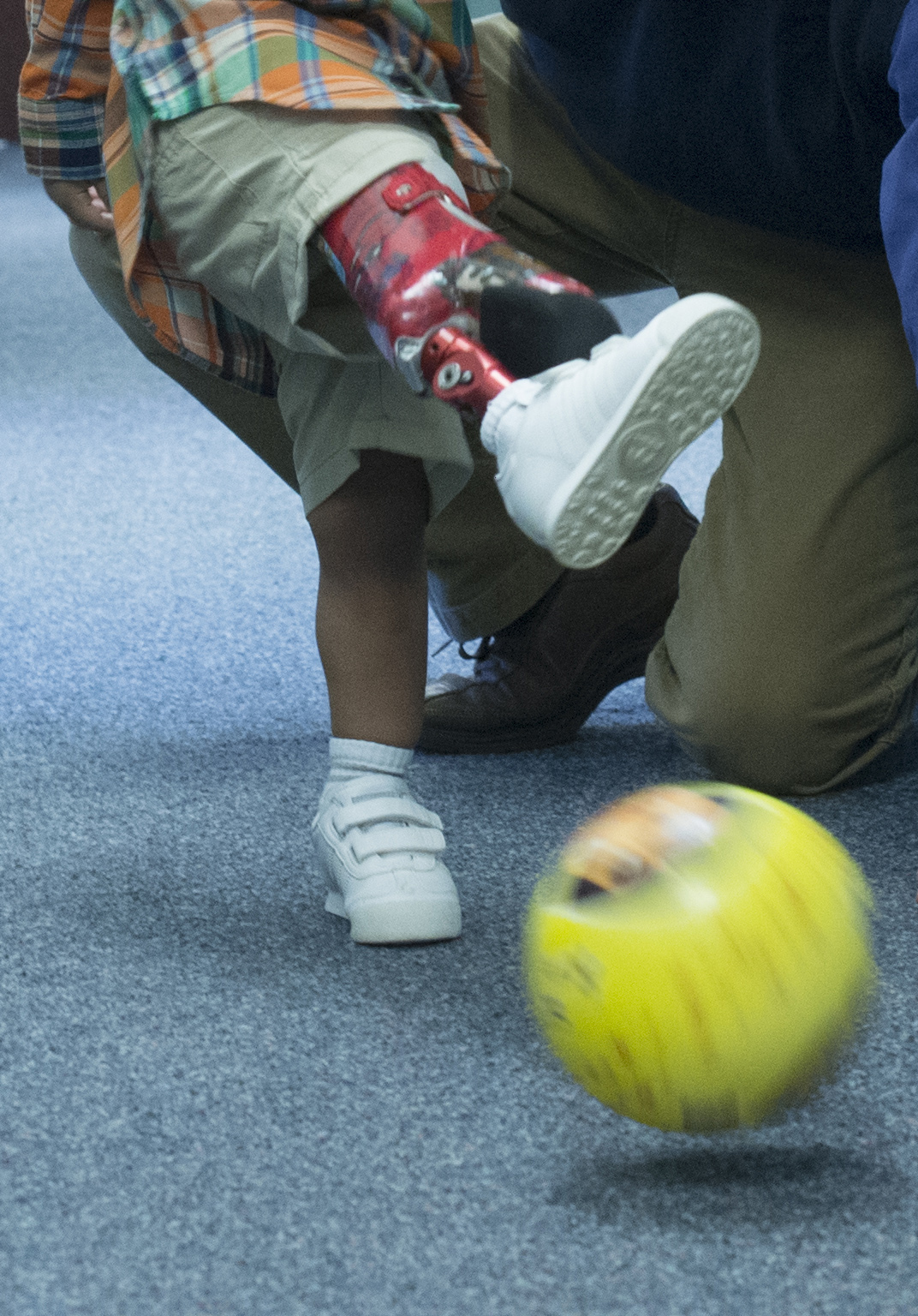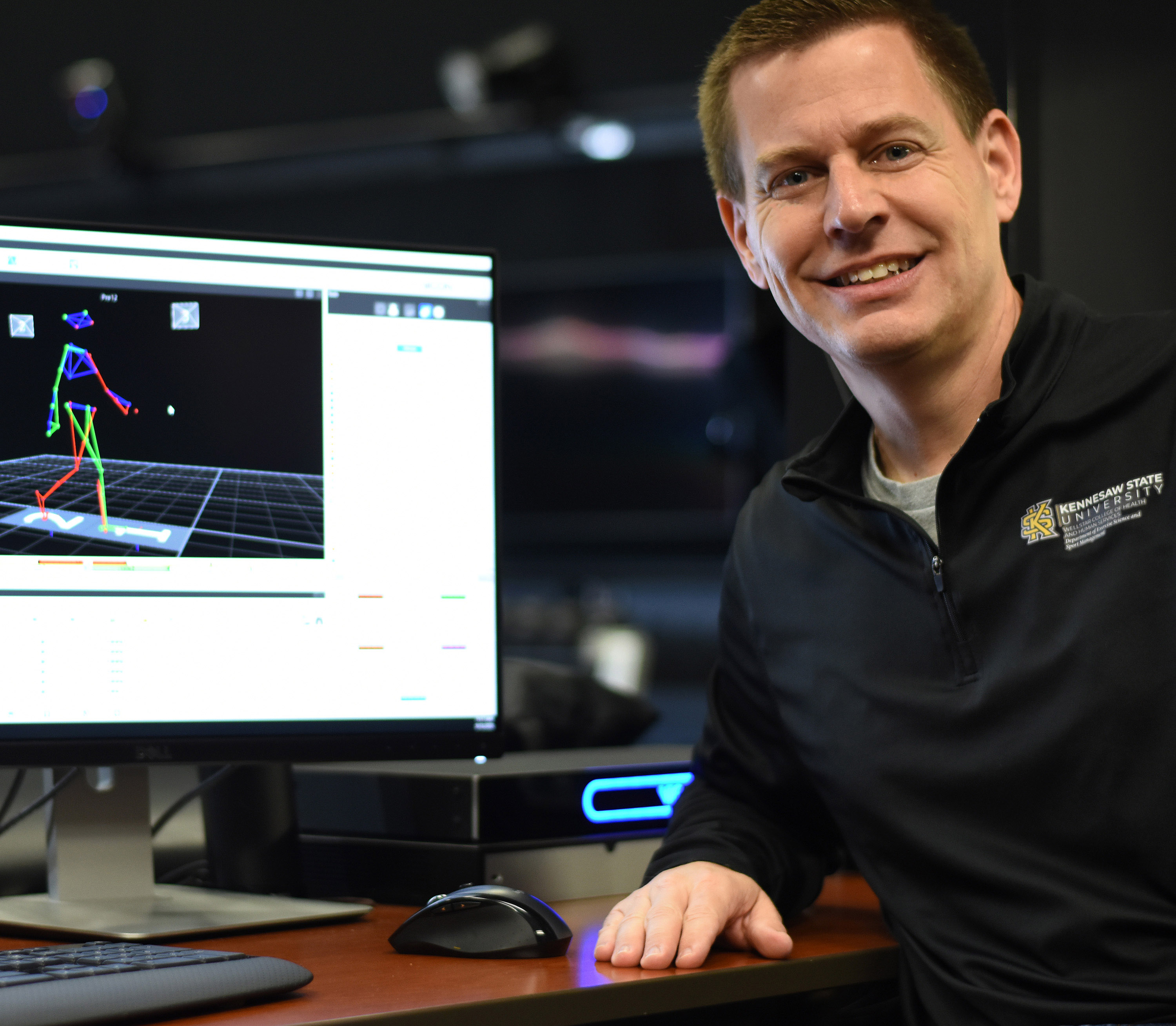Biomechanics
Professor Investigates Prosthetic Leg Options for Young Children
BY LANDON MION
KENNESAW, Ga. (Dec 2020) — As a biomedical engineer, Mark Geil is specifically interested in the way people move and walk, or locomotion biomechanics. He has analyzed prosthetic limbs in children and how they can be best designed to suit the needs of the children who use them.
 Geil’s research focus pertains to children with limb loss, looking into which prosthesis
a child should be given at a particular age, challenging basic clinical assumptions.
He said that understanding how children move with prosthetic limbs could lead to better
solutions in the design and usage of the limbs.
Geil’s research focus pertains to children with limb loss, looking into which prosthesis
a child should be given at a particular age, challenging basic clinical assumptions.
He said that understanding how children move with prosthetic limbs could lead to better
solutions in the design and usage of the limbs.
“Mobility is so important in people’s lives,” said Geil, professor of biomechanics. “The chance for someone just to get up and move to another place is something that is taken for granted all the time. When it is taken away, you see the impact it has on overall health and quality of life. Anything that I can do with my research to improve mobility for people, I count as a really important victory.”
Geil, who worked toward his Ph.D. in biomedical engineering at The Ohio State University, became interested in research and more specifically, locomotion research, when he took a class that was designed for medical residents in prosthetics orthotics. He loved it and identified some highly important clinical questions that had gone unanswered, which he tried to answer in his dissertation.
“Research is important because so much is unknown and we have so much discovery yet to do,” Geil said. “Our discoveries and the things that we learn can help us, particularly for those of us who do clinical human subject related research. The questions we answer have an impact, not only in future generations but maybe even on the people we see in our laboratories. That opportunity to help is a huge motivation for doing research.”

He noted how much his field has changed since he began studying it. The field of prosthetics and orthotics utilizes technological advancement. Geil said that it is not just the understanding of human function that is rapidly growing, but also the design, research, and development in the devices and artificial limbs. It is important that the field’s research changes to keep up with the environment in which they are researching, he noted.
“Even something as simple as walking takes people years and years to understand,” he said. “As engineers, it can take us a lifetime to try to duplicate it with a prosthetic limb and still never come close.”
Geil, also chair of the Department of Exercise Science and Sport Management in the Wellstar College of Health and Human Services, has worked with high school students, undergraduates, graduate assistants, and post-doctoral researchers, who have been involved in every aspect of his research. They assist in patient scheduling, data collection, and data analysis and write-up. He expressed how helpful it is to have a team working with him instead of doing it by himself.











